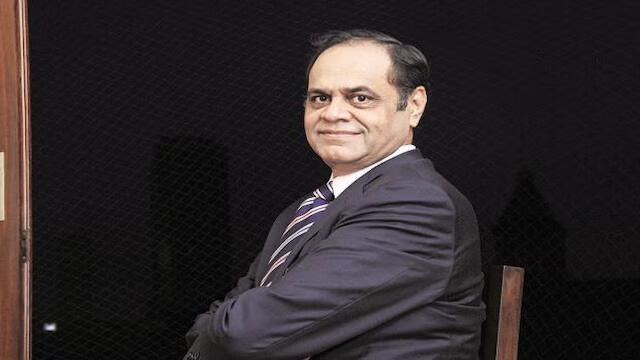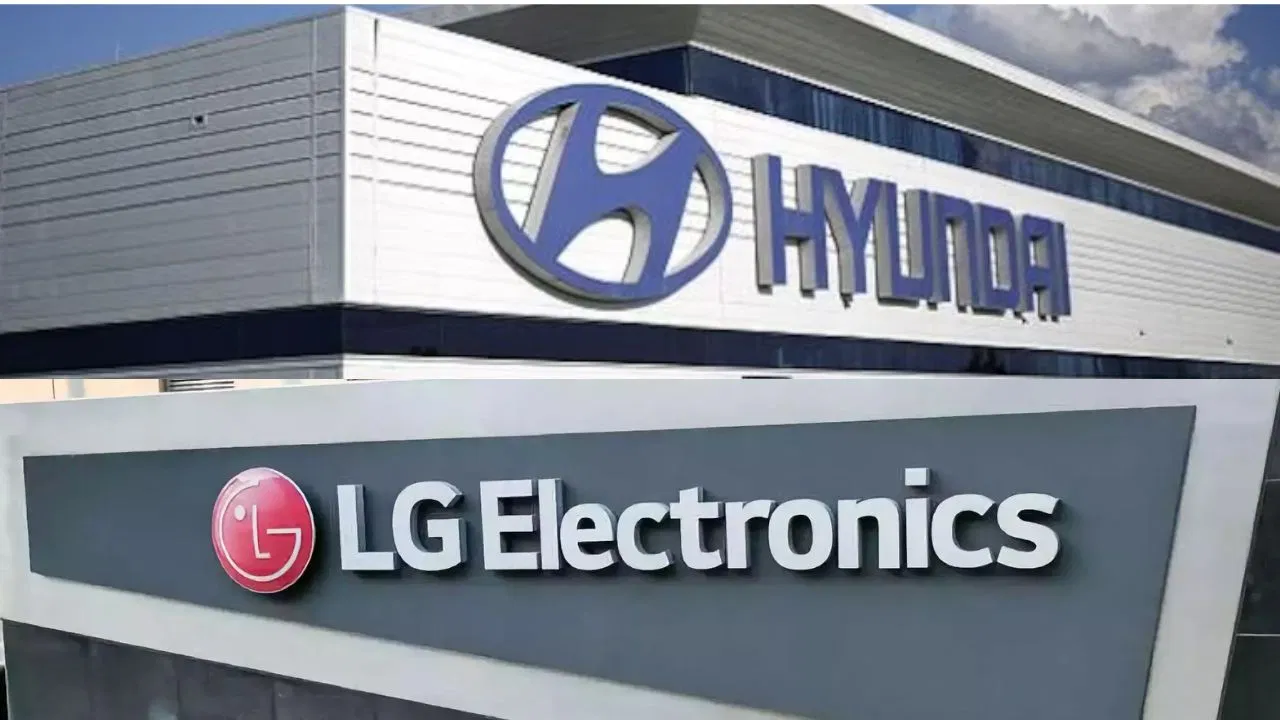Are K-Pop IPOs About to Drain Indian Markets Dry? Will They Cause Liquidity Crisis In India?
Veteran investor Ramesh Damani recently expressed concern that extensive South Korean initial public offerings, or what he referred to as "K-pop" IPOs, could spill over into the Indian stock market. The Indian stock market now has quite a buzz of "IPO activity," and many eagerly await the debuts of these South Korean firms on the Indian stock exchange.

Recently, veteran investor Ramesh Damani flagged concerns about the likely spillover effects of major South Korean IPOs – what he calls “K-pop” IPOs-on the Indian market. It is when this Indian market is abuzz with buzzword IPO activity. Many eagerly await these South Korean firms to debut on the Indian stock exchange.
Cautionary words from Damani, who has, for almost 40 years, been India’s point man on the stock market; Hyundai Motor India and a bunch of other South Korean companies that are looking to list their shares in India through an IPO will dry the liquidity in the Indian market. When giant corporates like Hyundai bring in billions of dollars through IPOs, there is bound to be a lag in capital for existing stocks. It could even correct the market.
What Is Liquidity?
In financial terms, it is the ease with which assets can be bought or sold in the market without affecting the asset’s price. This pertains to how quickly shares can be traded in the stock market. A liquid market has a lot of buyers and sellers; trading shares becomes easy, thus not changing the price much.
When big IPOs enter the market, they suck up a lot of liquidity since investment requires quite a large amount of money to buy shares in the IPO itself. This money comes from the total stock of capital that would otherwise be used for purchasing existing shares of other companies in the secondary market. Thus, the size of the total liquidity in the market dwindles.
Indian IPO Boom in 2024

This has been a splendid year for the Indian stock market, particularly regarding IPOs. These companies have garnered around $9 billion in funds as of September through IPOs. That is a considerable number, and domestic and international investors are not interested in Indian companies. Some big names going public or getting listed are Swiggy, Ola Electric, and Unicommerce.
The biggest IPO that has been talked about is Hyundai Motor India. SEBI (Securities and Exchange Board of India) has permitted them to issue the much-awaited IPO, for which they expect to raise about $3 billion. That will make it one of the biggest ever in India’s history- even bigger than the Life Insurance Corporation IPO, which was the largest.
Others on the South Korean list include LG Electronics and Samsung India, which also work on their respective IPOs within the Indian market. Together, the companies will mobilize a lot of money, which is expected to contribute to the already heated IPO market.
So, what’s Ramesh Damani worried about?
Ramesh Damani believes that while more foreign investments into India will flow via these South Korean IPOs, they could also adversely affect the Indian market.
“They are all going to suck up a lot of liquidity, is his main worry that is, as liquidity would be sucked into these IPOs; hence it would not remain in the market to buy the shares of other companies.”
Reduced liquidity can lead to higher volatility in the stock market. That simply means that prices of stocks can start flailing wildly from their usual norm, which becomes risky for investors. Damani also mentions that the valuations of many mid-cap and small-cap companies are small companies compared to giants like Hyundai or are already stretched. That means their prices might be higher than the actual financial performance warrants. If liquidity dries up, these companies might face sharp declines in their stock prices.
However, Damani’s views are not in isolation. Some market experts have been concerned that the current IPO boom might start overheating the market. Overheating occurs when too many companies issue shares within a short time frame. This means that investors become too enthusiastic and push stocks to unsustainable levels.
South Korean Companies in India

Some South Korean companies that made India their home include Hyundai, LG, and Samsung. The considerable investments in Indian markets have eventually led to the development of factories and avenues for employment, furthering India’s economy. Hyundai is amongst India’s top car manufacturers and is competing with Tata Motors and Mahindra & Mahindra, home-based players.
These companies view India as a growth market, especially with the Indian economy ever-expanding. With more than 1.4 billion inhabitants and an emerging middle class, India offers immense opportunities for consumer goods, electronics, and automobile industries where South Korean companies shine.
Listing their Indian subsidiaries on the Indian stock exchange, these companies hope to raise money to fund their expansion plans. For example, Hyundai is planning to invest in EVs, which will likely be a significant growth area over the next few years. Like LG and Samsung, they are expanding their consumer electronics business lines to tap into the rising smartphone, television, and home appliance-demanding market streams.
Effect on Indian Investors
IPOs in South Korea for Indian investors, on the other hand, have both an opportunity and a challenge. First, these IPOs offer a chance to invest in solid brands across the world that are well-established and are selling in India. Therefore, it could be an excellent long-term investment strategy, looking at stable growth-oriented businesses, for investors who want to invest their money into companies such as Hyundai or LG.
On the other hand, when massive IPOs are being floated, a lot of money would come in through these, and hence, one would see a drying out of liquidity in other parts of the market.
Several investors holding shares in mid-cap or small-cap companies might see their investments erode due to tighter liquidity beginning to encroach upon them, and this is why Ramesh Damani is cautioning. He feels that Indian markets have reached a stage wherein valuations are getting stretched, especially in the smaller company space. If liquidity dries out, those companies can take a big hit.
Oversubscription and Listing Gains
One of the reasons why people get very excited about Indian IPOs is the potential for listing gains. This is the listing gain that occurs, again and again, on the listing day of shares on the stock exchange when a company lists its shares for the first time. Listing gains have been solid in India lately.
According to Bloomberg, the average listing gain this year from Indian companies who have come out with their initial public offers ranged between 30% and 300%. That is much more than an average global listing gain of 22%.
Listing benefits are never guaranteed and are primarily due to oversubscription. Oversubscription is when the demand for shares in an IPO is greater than the number of shares issued. For example, if a company issues 1 million shares and investors require 10 million shares, then IPO is said to be subscribed by ten times. Though this results in highly sharp listing gains, it causes market volatility.
Three South Korean IPOs are coming down the way, and from the pent-up demand from investors, most of them should attract significant oversubscription. However, in the process, they would also lock a sizeable amount of money in these offers, thereby draining liquidity from the rest of the market. Softbank-backed Swiggy IPO is finally happening after all these whiles.
Other than the South Korean cos, there are also some Indian unicorns planning their public-listing debuts. Prominent among these is the IPO of Swiggy, an online food delivery behemoth. Swiggy, Japan-based Softbank’s promoter, has recently upsized its IPO to $1.4 billion. Swiggy wants to use this fund to expand its grocery delivery business further, which has become a severe competition lately.
The Swiggy IPO is another example of how India’s IPO market attracts big names and large amounts of capital. However, it contributes to the emerging concern that the market is too hot simultaneously.
What’s Next?

Indeed, the more companies that go public, the greater caution needs to go hand in hand with investors about where exactly they put their money. Of course, opportunities abound for making profits from IPOs. Still, the risk is definitely in creating an overheated market, where a drying up of liquidity will usher in a correction in the market, with stocks nosediving sharply.
If Ramesh Damani is cautioning that it may end up as a liquidity drain, then this is something that every investor should at least look at seriously. A liquidity trap signals bigger things that come from South Korea’s open-ended IPOs. Investors need to be careful and make sure that they are not overexposed to risky or overvalued stocks.
It will be essential to pay attention over the next few months as these IPOs present themselves and how the market responds. As it turns out, liquidity does present a challenge, and then, by extension, the overall market may be slowed down as both IPO and regular stocks feel the pinch. Thus, those prepared investors who view things from a precautionary outlook will be best ready to muscle through this rapidly changing new landscape.
All the IPOs mentioned above would hit the market in South Korea shortly, and while this would provide exciting times for Indian investors, it would also prove to be a challenge for them.
Such large-sized offerings might suck away liquidity from the Indian market, resulting in high volatility and falling stock prices, more so at the mid-cap and small-cap levels. As the renowned investor Ramesh Damani recently cautioned, the investor must be cautious and aware of any possible risk.
As the IPO market remains hot going into this new year, what’s needed is for investors to focus more on companies with good fundamentals and avoid being flamed for fear of getting caught chasing overvalued equities.



